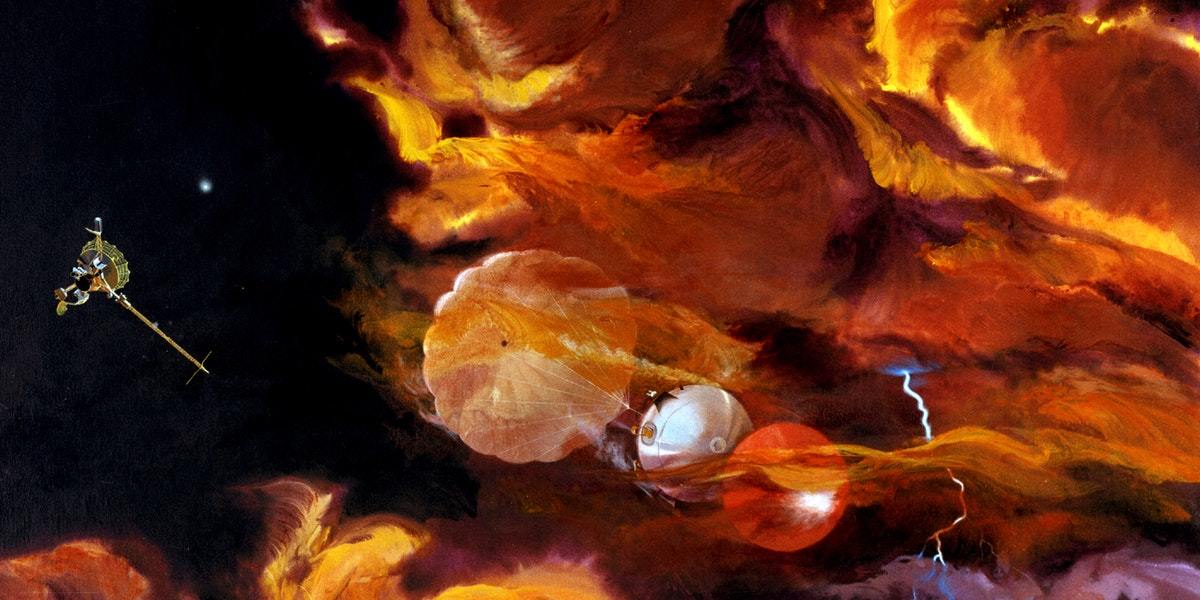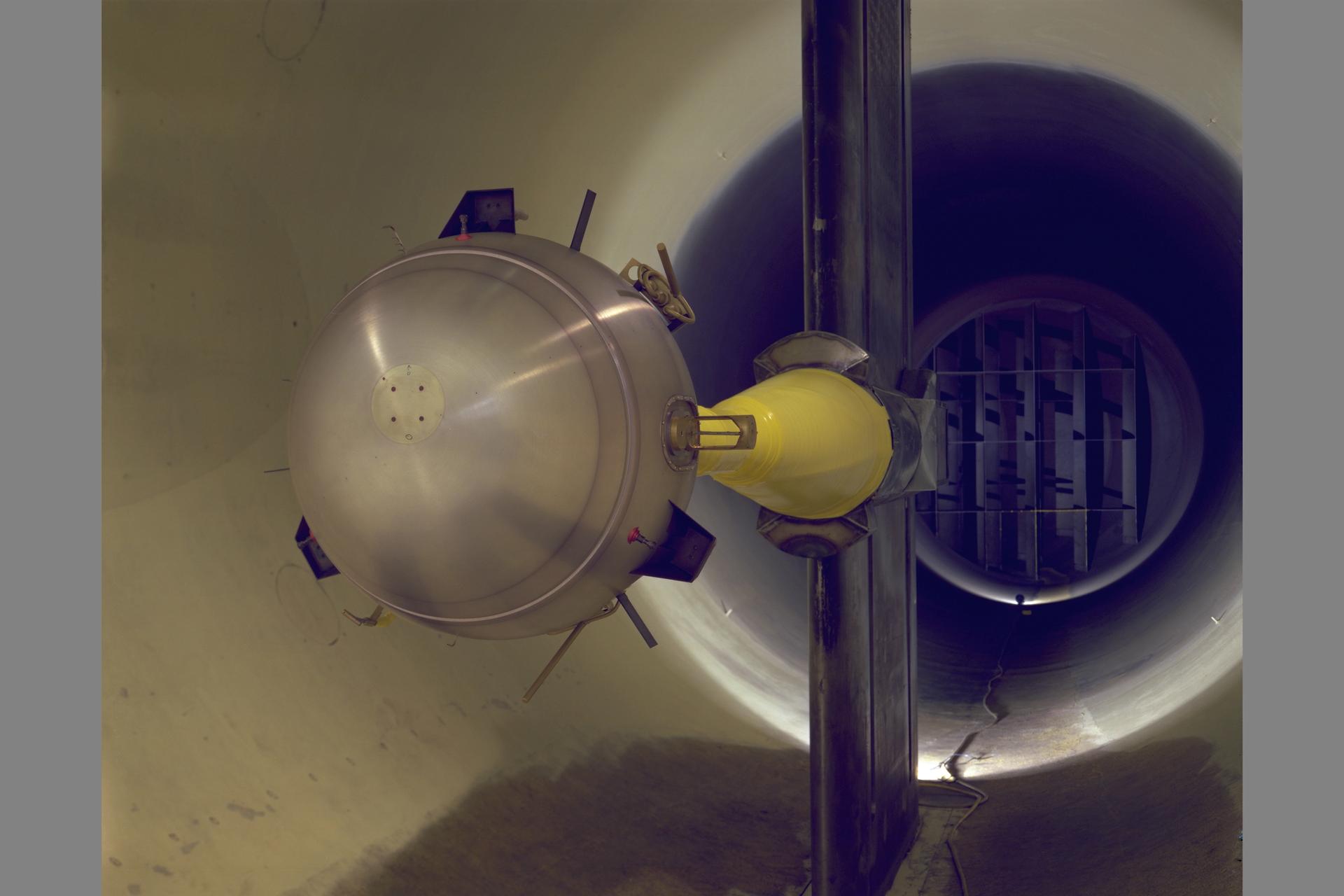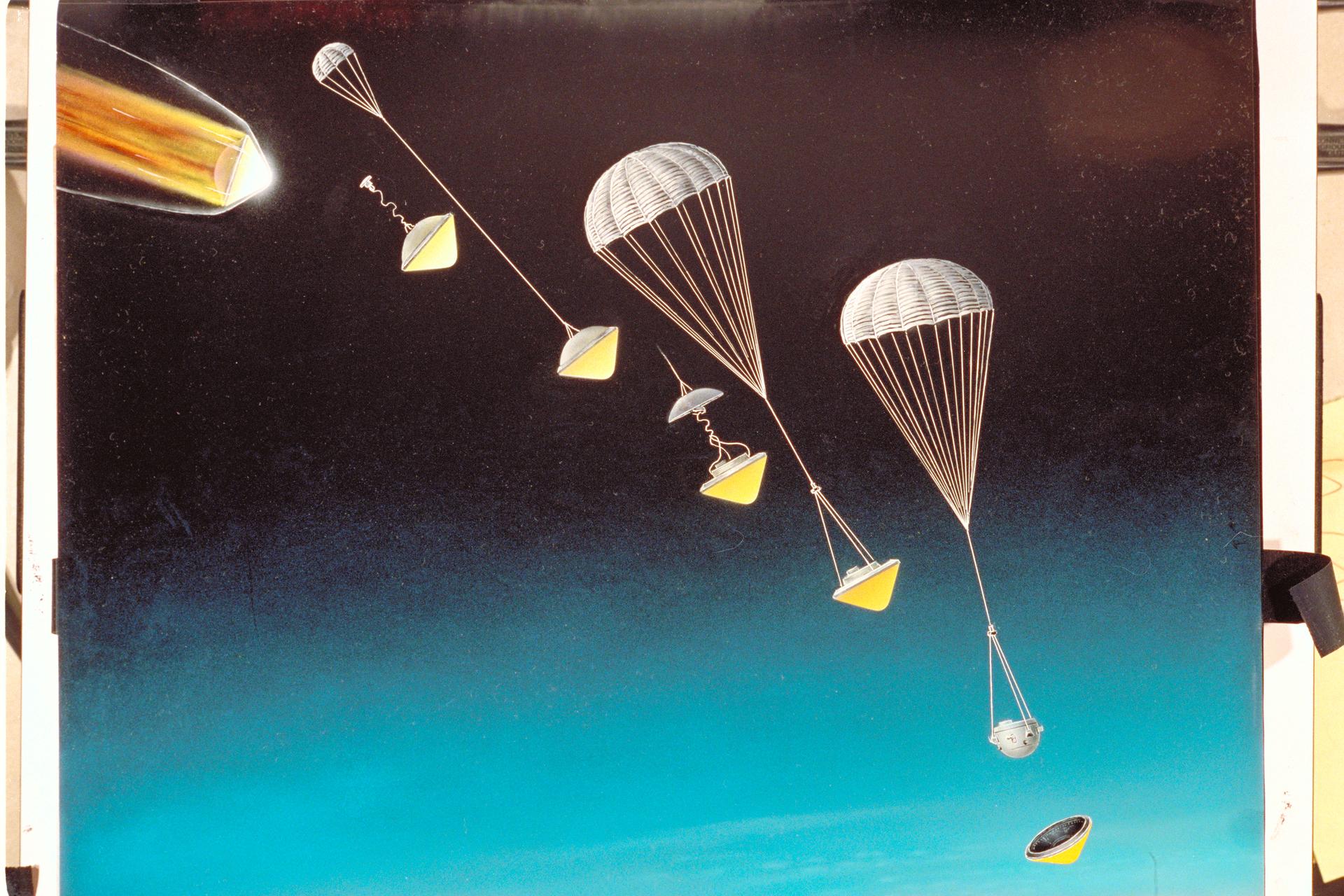What was the Galileo probe and what did it do at Jupiter?

An artist’s impression of NASA's Galileo probe entering Jupiter’s atmosphere.
NASA
The Galileo Probe became the first atmospheric probe to examine a gas giant on Dec. 7, 1995. The key events which occurred were (all times are the time of the event at the spacecraft given in Eastern Standard Time):
Time (EST) | Event |
|---|---|
11:04 a.m. | Coast timer initiates probe operation |
12:46 p.m. | Orbiter flyby of Io (~1000 km) (No imaging or spectral data collected) |
2:04 p.m. | Energetic Particles Investigation (EPI) begins measuring trapped radiation in a region previously unexplored. |
4:54 p.m. | Galileo Orbiter reaches closest point to Jupiter |
5:04 p.m. | Probe entry and data relay |
5:05:52 p.m. | Pilot parachute deployed |
5:05:54 p.m. | Main Parachute deployed |
5:06:02 p.m. | Deceleration module jettisoned |
5:06:06 p.m. | Direct scientific measurements begin |
5:06:15 p.m. | Radio transmission to orbiter begins |
~5:08 p.m. | Visible cloud tops of Jupiter reached |
5:12 p.m. | Atmospheric pressure the same as Earth's sea-level pressure |
5:17 p.m. | Second major cloud deck is encountered (uncertain) |
5:28 p.m. | Water clouds entered (uncertain) |
5:34 p.m. | Atmospheric temperature equal to room temperature on Earth |
5:46 p.m. | Probe enters twilight |
6:04 p.m. | End of baseline mission. Probe may cease to operate due to lack of battery power, attenuation of signal due to atmosphere, or being crushed. |
6:19 p.m. | Orbiter ceases to receive probe data (if still transmitting) |
7:27 p.m. | Ignition of Galileo main engine (49 minute duration) to insert into Jovian orbit |
It is estimated that by 3:00 a.m. (EST) on 8 December 1995, the probe had been completely vaporized by the heat in Jupiter's atmosphere.

Galileo Probe test-358 in NASA Ames Research Center 12ft Pressure Wind Tunnel

Artist: unknown Jupiter Mission: Pioneer Galileo Entry Probe Artwork (descent and separation)
Keep Exploring




